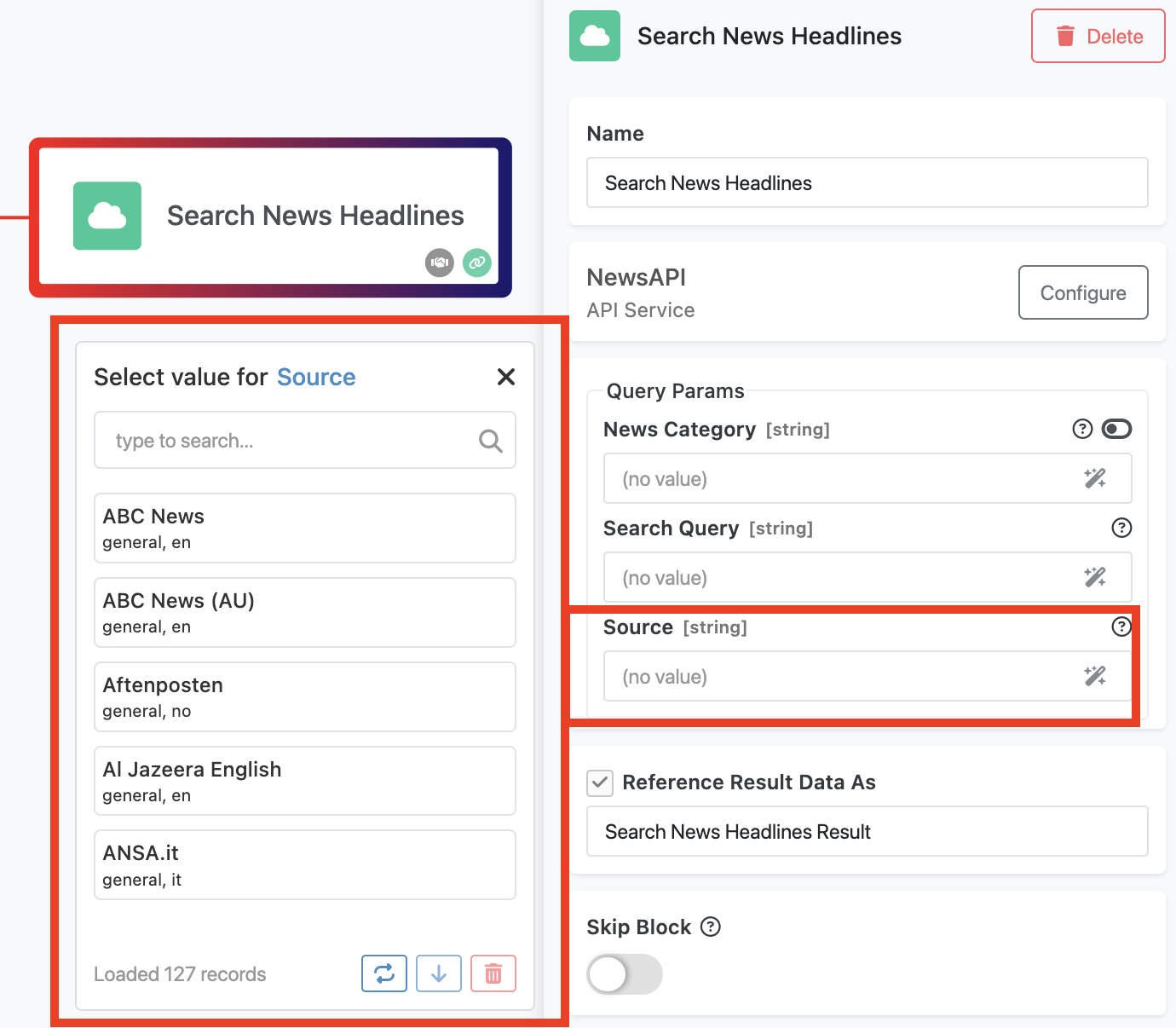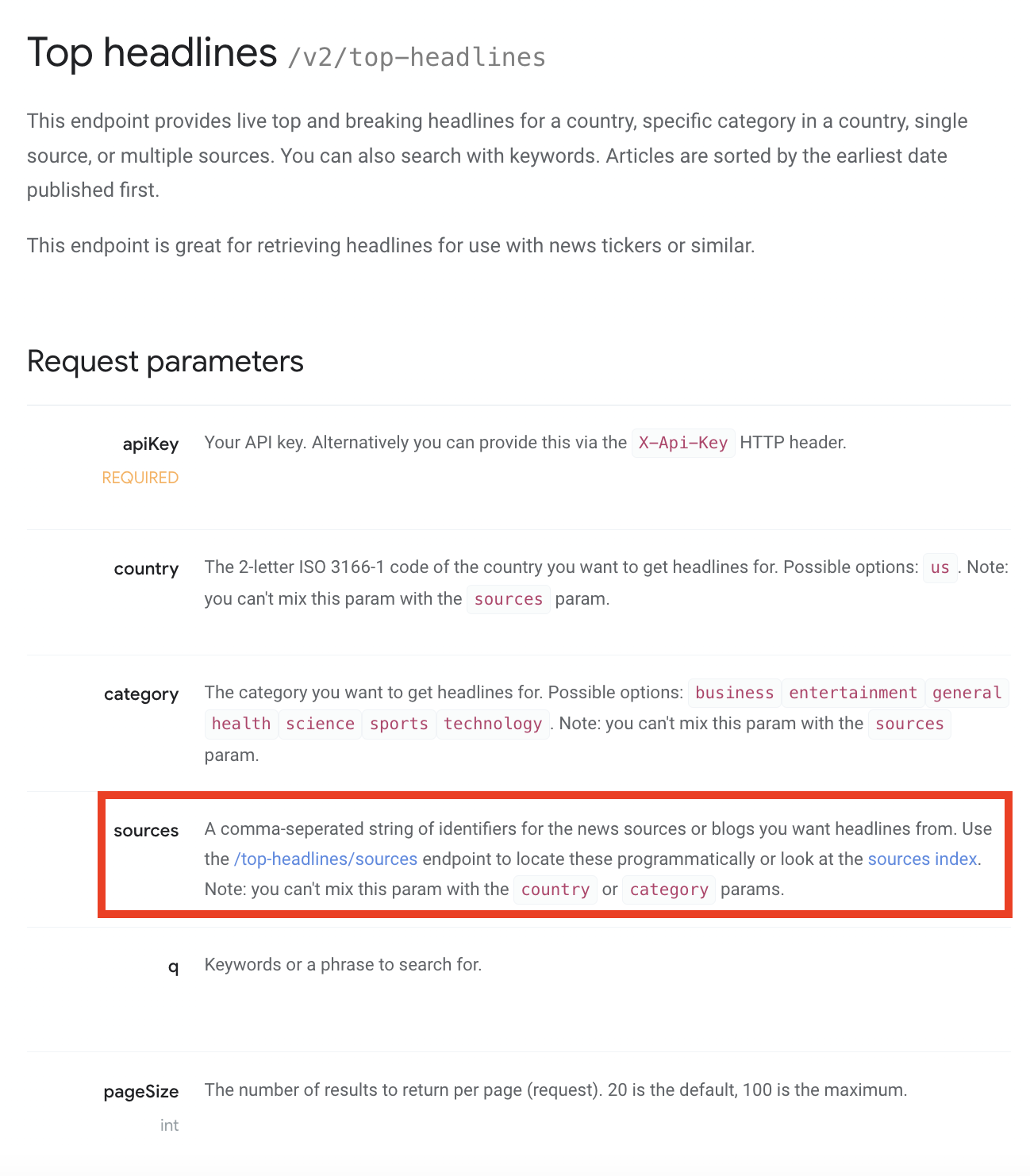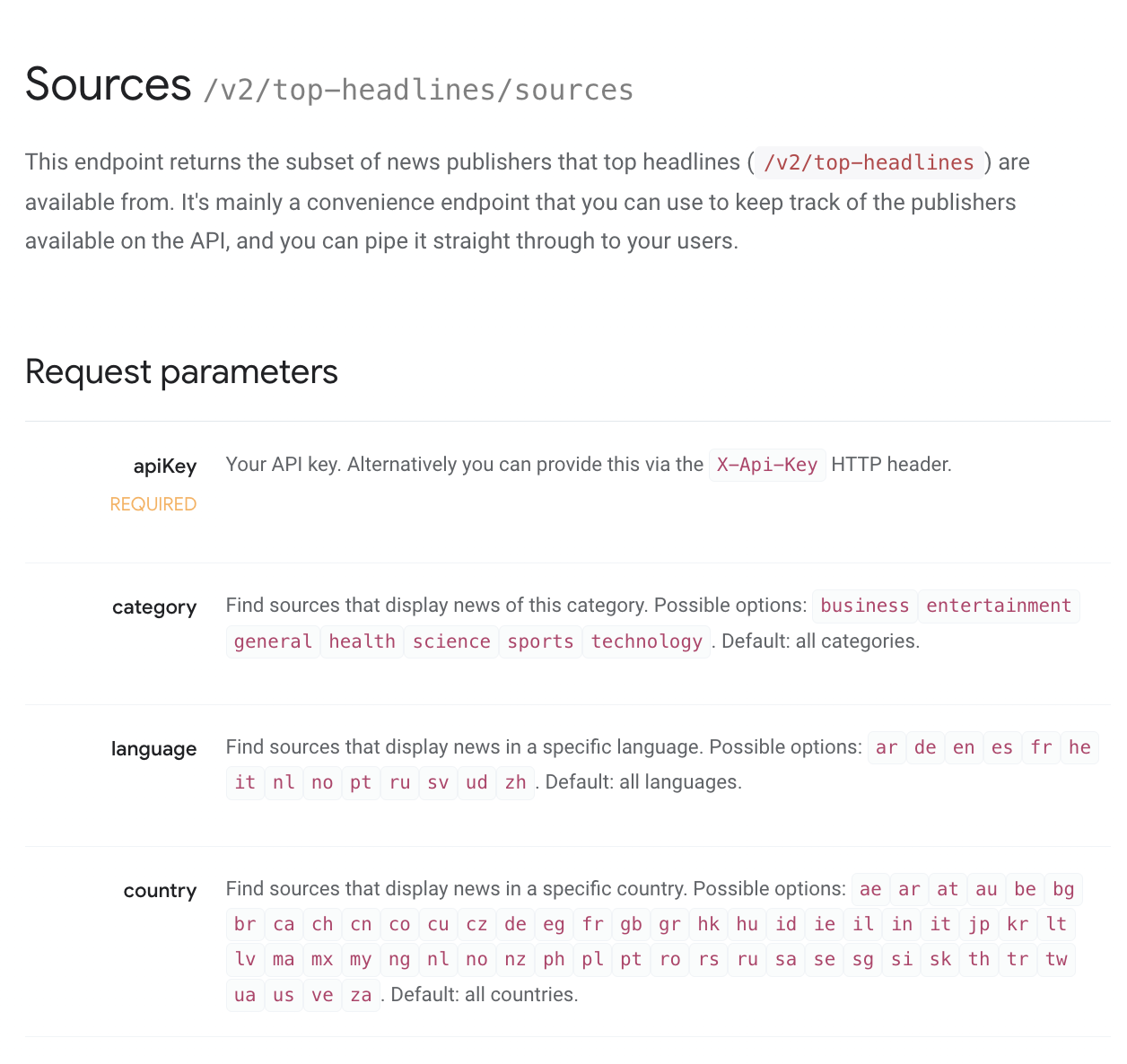Developing an Action with Dictionary Arguments¶
In this guide, you will enhance the action you created in the Build Basic Action Guide and expanded in the Build Action with Arguments Guide. You will implement a dictionary argument, which allows your FlowRunner action to fetch external data and present it to the user as a dynamic list of selectable options.
For example, let’s say your Search News Headlines action should allow users to choose a specific news source. Instead of asking users to type the source manually, you will implement a dictionary function that dynamically fetches available sources from an external API and presents them as a selectable dropdown in FlowRunner:

This approach is ideal when your action needs to present up-to-date choices - such as API resources, dynamic datasets, or filtered lists. It also applies when available options depend on prior selections, like choosing a specific sheet from a selected Google Sheets document.
Scenario Example: NewsAPI.org¶
In this guide, you will enhance the Search News Headlines action you created in the previous chapter by adding a dictionary parameter. Specifically, you will integrate it with NewsAPI.org to allow users to select a news source from a dynamically populated list. The Top Headlines endpoint accepts a sources parameter, but obtaining valid source values requires calling a separate API:

Below is the documentation for the corresponding Sources endpoint, which you will use to dynamically populate the dictionary list:

Implementation Overview¶
Enabling dictionary functionality requires two main tasks:
- Build a dictionary function - A function that retrieves and formats dynamic options.
- Link the dictionary to a parameter - Connects the input field to your dictionary logic for dynamic selection.
Build Dictionary Function¶
A dictionary function fetches external data and prepares it for FlowRunner’s dropdown UI. It powers an input that supports search, pagination, and clearing selections:

What This Function Does¶
Here is a full implementation of a dictionary function that retrieves available news sources from NewsAPI.org.
- Fetches source options from NewsAPI.org.
- Filters items based on user search input.
- Returns results in the required FlowRunner dictionary format.
About the Dictionary Typedefs¶
The first three @typedef blocks define shared types and should only be declared once per service file:
The dictionary function is registered using the @registerAs DICTIONARY tag and a matching @route declaration:
Return Format¶
A valid dictionary response must include: - items: An array of selectable options. - cursor: Used for pagination (optional depending on your use case). - label, value, note: Fields used by FlowRunner’s UI.
Link Dictionary to Parameter¶
With the dictionary function ready, you can now link it to a parameter inside your action using the dictionary property in the @paramDef.
Below is an updated version of your getNewsWithCategoryOrQuery action, now with an additional source parameter tied to your dictionary function:
/**
* @description Retrieves top news headlines for a category and/or a search query
*
* @route GET /getNewsWithCategoryOrQuery
* @operationName Search News Headlines
* @appearanceColor #FE1212 #191970
* @executionTimeoutInSeconds 120
* @paramDef {"type":"String","label":"News Category","name":"category","required":false, "uiComponent": {"type":"DROPDOWN", "options":{ "values":["business", "entertainment", "general", "health", "science", "sports", "technology"] }}, "description":"The category you want to get headlines for."}
* @paramDef {"type":"String","label":"Search Query","name":"query","required":false,"description":"Keywords or a phrase to search for."}
* @paramDef {"type":"String","label":"Source","name":"source","required":false,"dictionary":"getSourcesDictionary", "description":"News source to get headlines from."}
* @returns {Object} Returns news headlines from the specified category and/or a search query.
*/
async getNewsWithCategoryOrQuery(category, query, source) {
The "dictionary": "getSourcesDictionary" property binds the Source input to the dictionary logic, enabling dynamic dropdown values in FlowRunner.
* @paramDef {
"type":"String",
"label":"Source",
"name":"source",
"required":false,
"dictionary":"getSourcesDictionary",
"description":"News source to get headlines from."
}
Best Practices¶
To ensure a smooth user experience and efficient integration, follow these best practices:
Optimize API Requests - Limit returned records (e.g., up to 100 items) to improve UI performance. - Use external API pagination if supported.
Implement Effective Search
- Filter results based on the search input passed by FlowRunner.
- Support partial and case-insensitive matches.
Handle Errors Gracefully - Log and catch API errors inside dictionary functions. - Return empty lists or helpful notes if data retrieval fails.
Minimize Unnecessary Calls - Cache static data or slow-changing datasets (e.g., static category lists) to avoid redundant API requests.
Standardize the Output - Always provide label, value, and note fields for consistency. - Keep dropdown labels short and clear.
By following this approach, you will provide FlowRunner users with responsive and user-friendly dictionary inputs connected to real-time external data.